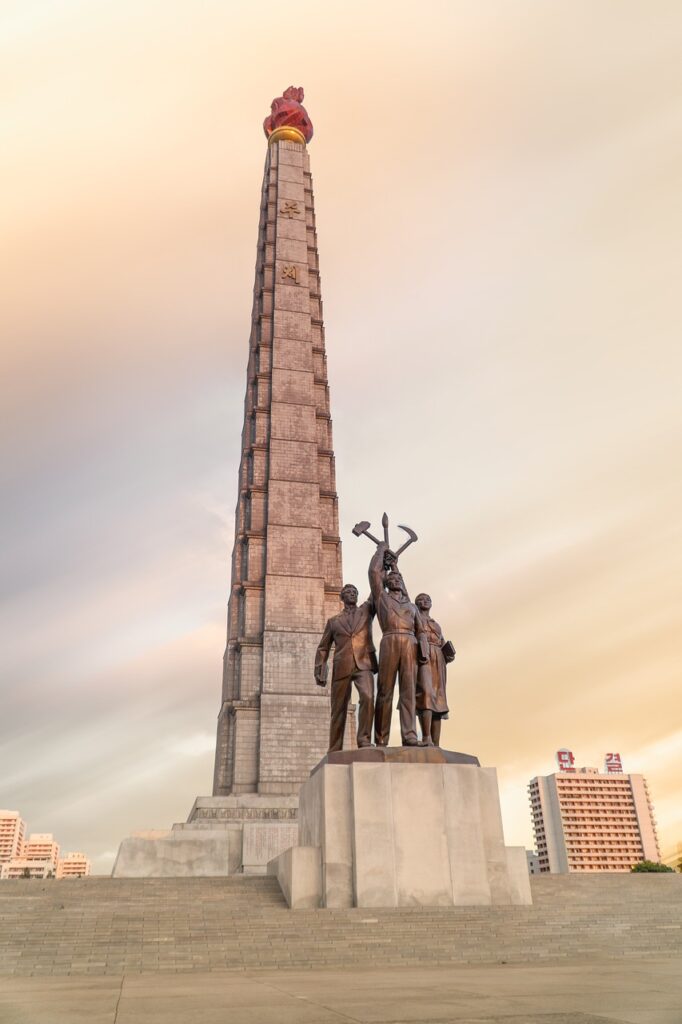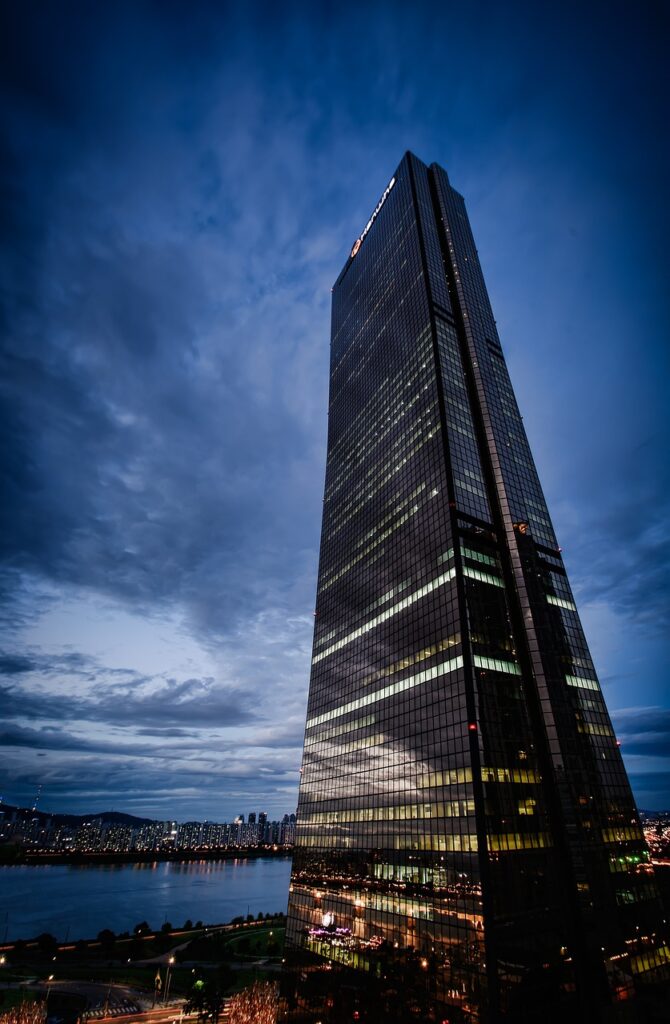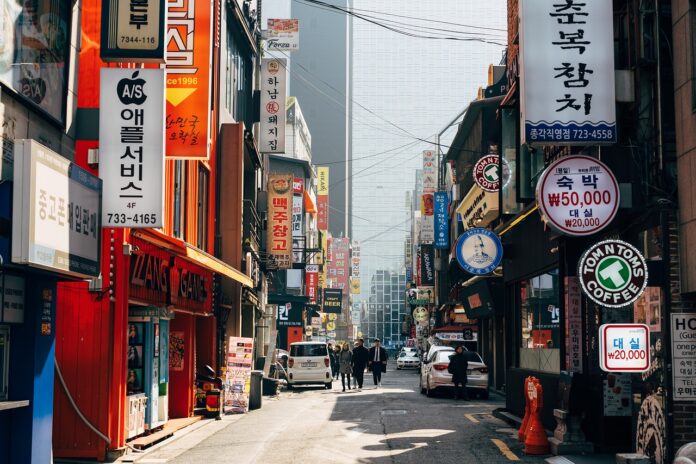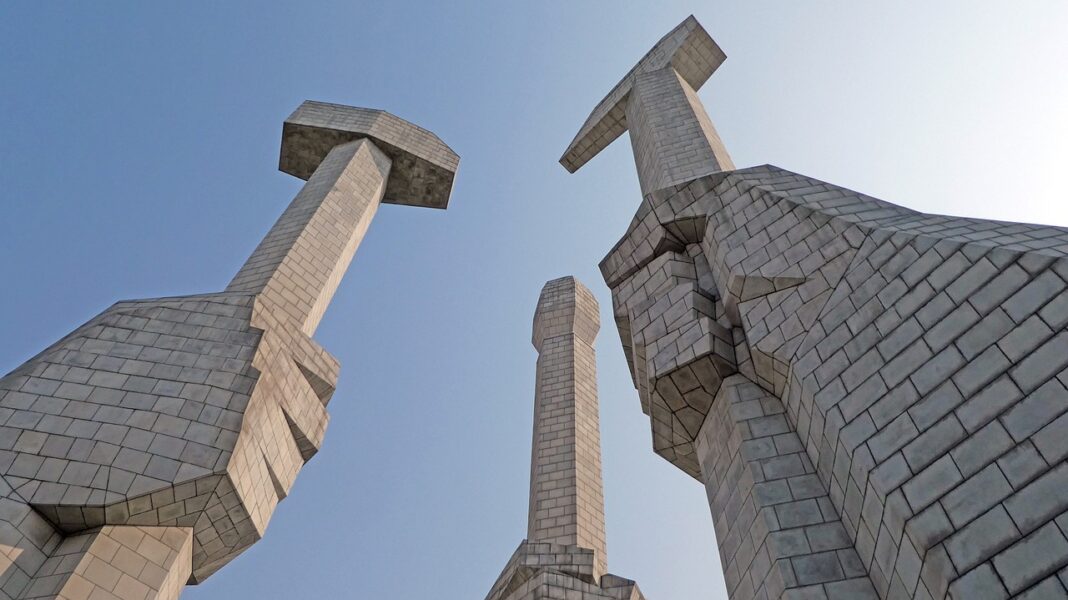Barely two weeks into 2024, tensions on the Korean Peninsula are rapidly escalating. On one hand, North Korea has declared it will no longer pursue unification as long as Seoul sticks to a strategy centred around the “collapse of the DPRK’s regime,” “unification by absorption,” and “unification under liberal democracy.”
On the other hand, South Korea announced plans to further strengthen the US-ROK extended deterrence system aimed at the North, calling for “peace through strength.” Given the starkly different positions held by the two Koreas, prospects for the improvement of inter-Korean relations this year look bleak.
In reality, the escalating hostility between the two nations will likely lead to a rapid deterioration of the security situation on the Peninsula, potentially jeopardizing regional peace and stability.
Unification Policies: Irreversible, Incompatible or Impossible?
Although inter-Korean relations have not progressed in a positive direction over the past four years, North-South ties reached a new low point on December 31, 2023, when Pyongyang announced a change in the country’s unification policy. According to North Korean media KCNA, Kim Jong-un called for a “decisive policy change” in how the North deals with the South. Kim announced the policy shift at the 9th Enlarged Plenary Meeting of the 8th Central Committee of the Workers’ Party of Korea (WPK), held from Dec. 26-30.
According to the North Korean leader, his country’s policy for national reunification has not had its desired effect, instead “the north-south relations have repeated the vicious cycle of contact and suspension, dialogue and confrontation.” He accused South Korea of pursuing “unification by absorption” and “unification under liberal democracy,” with the goal of the “collapse of the DPRK’s regime.” According to Kim, this version of unification sought by the South is not compatible with the North’s version of “national reunification based on one nation and one state with two systems.”
North and South Korea have had their own views on unification ever since the formation of two separate states on the Peninsula in 1948. At that time, it was important for both Koreas to prove their legitimacy as the “true Korean nation.” Particularly in the early years of the Cold War, the main approach was to achieve unification by force. This strategy then changed in the ‘80s with the North proposing the “Democratic Federal Republic of Koryo” and the South presenting its “Unification Formula for the Korean National Community.”
The South Korean version of unification calls for a 3-step process of reconciliation and cooperation, the formation of a Korean commonwealth, and the realization of a unitary state based on liberal democratic values. On the other hand, the North Korean version of unification calls for the formation of two regional Korean governments that implement policies under the direction of a Confederal government.
The North later amended its proposal in 1991 to a “low stage federation”, saying it would be open to allowing regional governments more autonomy. This brought the unification formulas of the two Koreas closer together, with the leaders of North and South agreeing in the June 15, 2000 Joint Declaration that “there are common elements in the South’s proposal for a confederation and the North’s proposal for a federation of lower stage as the formulae for achieving reunification” and that unification would be pursued in that direction.
Nevertheless, important differences remained in terms of what the final version of a unified state would look like. For the South, it would be “one nation, one state, one system, one government” under a liberal democratic system, while for the North it would be “one nation, one state, two systems, two governments,” which would ensure the continuation of the North’s socialist system. The two formulas for unification have not changed much over the years.
Realizing the disparity in their views, Kim Jong Un described inter-Korean relations at the December Plenary Meeting as “relations between two states hostile to each other and the relations between two belligerent states,” arguing that “the reality urgently requires us to adopt a new stand on the north-south relations and the reunification policy.”
The announcement by Pyongyang is significant. Although the North is known to use harsh rhetoric and throw insults at the South Korean government regularly, the latest development goes further by announcing a formal change in the country’s policy line concerning unification with the South. This is the first time the North Korean government publicly declares it will no longer be pursuing unification.

This situation puts South Korea in a difficult position. Unlike the North, South Korea cannot openly denounce the goal of unification since it is enshrined in the country’s Constitution (Article 4: “The Republic of Korea shall seek unification and shall formulate and carry out a policy of peaceful unification based on the principles of freedom and democracy.”). South Korean Unification Minister Kim Yung-ho reiterated this stance on Jan. 2, saying the South will continue to “prepare for unification in earnest,” while warning that the North will not be able to overcome the US-ROK ‘wall’ of deterrence.
Although the Constitution calls for unification to be pursued ‘peacefully’, North Korea accuses the South of adhering to the so-called ‘unification by absorption policy’, which would see the North Korean government collapse and the two Koreas reunited by South Korea ‘absorbing’ the North and forming one nation under the South Korean system. Even though each government in the South states its goal of achieving unification through peaceful means, wording used in various unification-related documents over the years rejects the idea of a unified Korean state that includes the presence of the current North Korean governing system.
For example, one 2012 report on unification states that “the authoritarian and totalitarian systems that still remain on the Korean Peninsula must be eliminated,” pointing to the North Korean system. Moreover, regarding the current government, the 2023 Unification Ministry’s White Paper on Korean Unification states that the Yoon administration’s priority is to “denuclearize North Korea” (not the Korean Peninsula), while aiming for “peaceful unification based on a basic free and democratic order.” Meanwhile, the first sentence on the Korea Institute for National Reunification (KINU)’s current homepage states that “The territory of the Republic of Korea shall consist of the Korean peninsula and its adjacent islands,” in accordance with the South Korean Constitution—underscoring the view that sees the South as the only legitimate Korea and the territory in the northern half of the Peninsula as belonging to South Korea.

North Korea sees this position as incompatible with its vision for a unified Korea and has therefore given up, at least for now, on the goal of unification. Instead, North Korea will likely prioritize further strengthening its military capabilities while deepening ties with traditional allies such as Russia and China. Regarding the latter, Kim Jong Un mentioned at the Plenary Meeting his plans of “further developing the relations with the anti-imperialist independent countries opposed to the hegemony strategy of the U.S. and the West.” In short, improving relations with South Korea is not on the priority list.
Peace through strength
At present neither side (lately South too) does not seem to be prioritizing unification. The Yoon government has designated North Korea as the South’s “main enemy” and is vowing to double down on its hardline, deterrence-centered strategy in 2024.
“Korea will build peace through strength. It will not be a submissive peace that is dependent on the good will of the adversary,” President Yoon said in his 2024 New Year Address. In terms of what this approach looks like in practice, the South Korean president explained: “We will accelerate our efforts to build a stronger ROK 3K Defense System to defend against North Korean nuclear and missile threats.”
The 3K Defense System refers to the Kill Chain system, the Korea Air and Missile Defense system, and the Korea Massive Punishment and Retaliation plan. The Kill Chain system is particularly controversial as it aims to launch a preemptive strike to remove the North Korean leadership in the face of an imminent nuclear attack.
Unlike the previous Moon Jae-in administration, the Yoon government has taken a more hardline stance toward the North, favoring military deterrence over diplomacy. Pyongyang has made its displeasure at the Yoon administration clear from the beginning, insulting the South Korean president on various occasions and calling his plans for denuclearization of the North in exchange for economic aid “the height of absurdity.”
Since coming to office, President Yoon has prioritized deepening ties with the US and Japan and strengthening deterrence aimed at North Korea. Steps toward the latter were solidified in July when Yoon and US President Joe Biden launched the US-ROK Nuclear Consultative Group (NCG) aimed at strengthening extended deterrence, discussing nuclear and strategic planning, and ‘managing the threat to the nonproliferation regime’ posed by North Korea. Yoon also highlighted the NCG in his New Year’s speech, saying that the US and South Korea have now established a “nuclear-based” military alliance.
The NCG has further driven a wedge between North and South Korea, with Pyongyang seeing it as yet another hostile move by Washington and Seoul. In Kim Jong-un’s opinion, the NCG is “aimed at the joint plan and execution for the use of nuclear weapons” by the US and ROK and is bringing the two Koreas closer to war. The North Korean leader also heavily criticized Yoon’s decision to “complete the enhanced ROK-U.S. extended deterrence system” by the first half of 2024.
South Korea’s Unification Ministry is also echoing the same hardline policy approach. “The government will craft a ‘thicker and more elevated’ deterrence system through the strengthening of the Seoul-Washington alliance in order to brace for Pyongyang’s potential military provocations,” South Korea’s Unification Minister Kim Yung-ho said on Jan. 2. The Unification Minister is known for his hardline stance toward the North, having said in 2019 that unification would only be possible once the North’s government “is overthrown and North Korea is liberated.“

Pyongyang’s window of opportunity?
North Korea has repeatedly criticized the Yoon administration, seeing the current South Korean government’s strategy as one more likely to result in conflict than reconciliation. Pyongyang made its stance vis-à-vis the Yoon government explicitly clear on Jan. 2 through a statement made by Kim Yo Jong, Kim Jong Un’s sister. The message was specifically directed at the South Korean president, with the title of the statement reading “New Year message to the president of the Republic of Korea.”
“The present security situation on the Korean peninsula is so critical that it may be not strange to see the outbreak of war at once, and the security uneasiness has become a commonplace in the ROK. This is entirely ascribable to the ‘merits’ of President Yoon Suk Yeol.” – Kim Yo Jong, Jan. 2, 2024.
Kim Yo Jong strongly criticized Yoon’s “peace by force” approach toward the North and mocked the South’s policy for being counterproductive by giving the North all the justification it needs to further grow its military and nuclear capabilities. “Thanks to the frequent introduction of U.S. nuclear carriers, nuclear submarines and nuclear strategic bombers allegedly to frighten anyone, the DPRK could develop its military capabilities in a reasonable and effective way,” she argued.
She called Yoon’s presidency a “golden opportunity” for North Korea and a “valuable gift,” adding that if the opposition candidate would have won in the 2022 presidential elections, it would have been “a serious trouble to us.”
“The tremendous military muscle we are so satisfied with and trust in may have been hard to be secured in such a short span of time without the military confrontation attitude that Yoon showed so wildly and his clamoring for ‘collapse’ of our country and ‘punishment’.”
Similarly, critics of the Yoon administration’s North Korea approach claim the South’s policy is increasing the risk of conflict, giving North Korea time to further develop its nuclear and missile programs, and making diplomacy impossible. Kim Yo Jong called on Yoon to continue his current policy line, as his current approach is helping “bolster up the military muscle of the DPRK.”
2024 – a rocky road ahead
With unification goals off the table—at least for now—North Korea is likely to take a much more aggressive stance against the South this year. Signs of heightened tensions are already becoming apparent, with South Korea claiming the North conducted live-fire drills near the Western border with the South for three consecutive days over the weekend. In a report published by KCNA on Sunday, however, Kim Yo Jong refuted Seoul’s claims, saying instead that the North “conducted a deceptive operation in order to assess the real detecting ability of the ROK military gangsters” and that the Korean People’s Army (KPA) had in fact detonated “blasting powder” simulating the sound of artillery.
Regardless, the tendency of the South to respond in kind to North Korean provocations does not bode well for the stability of the Peninsula or the wider region. This is especially so now that the 2018 inter-Korean Comprehensive Military Agreement has practically been scrapped. With neither side showing any signs of softening their approach to each other, 2024 will likely see tensions between the Koreas continue to rise, perhaps to new heights.
This year’s presidential elections in the US are also likely to spur increased military actions by North Korea, including a possible nuclear test. Even if Donald Trump is reelected, inter-Korean ties are unlikely to progress in a positive direction this year. The new US president would have to make a major shift in Washington’s North Korea policy, away from a deterrence-centered strategy toward one prioritizing engagement, the resumption of diplomacy, and arms control instead of denuclearization. North Korea will remain uninterested in diplomacy as long as the US’ current policy remains unchanged. The same is true for its stance toward South Korea.
Published by the International Institute for Middle East and Balkan Studies – IFIMES
About the author:
Gabriela Bernal is an East Asia political analyst based in Seoul, South Korea. She is prolifically writing for Asian and western scientific and popular outlets.
The views expressed in this article are the author’s own and do not necessarily reflect IFIMES official position.




